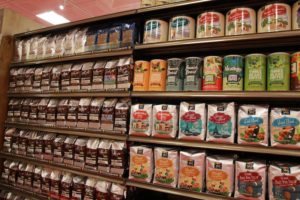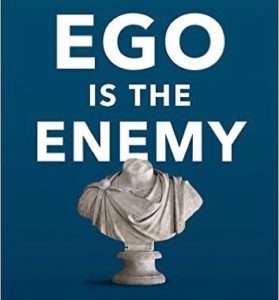I am not one of the regulars at Whole Foods Market. I am an alien, an outsider. But I am curious as to how a grocery store became so polarizing. Faithful Whole Foods shoppers refuse to buy food from any other store while it’s objectors denounce it as a temple of pseudoscience. Either way, I am making a pilgrimage to explore the Mecca of socially-conscious foodstuffs in hopes that I can obtain a glimpse into this exclusive society. What follows is my eyewitness account.

As I shuffle cautiously into my local Whole Foods Market, I am not entering a grocery store. I am being cast into the midst of an obnoxious fall festival. The neatly arranged cornucopias, pumpkins, hay bales, and containers of eight-dollar organic caramel dip remind me that I am not, in fact, here to shop for groceries. I am here for a quasi-religious experience.
Beyond the seasonal section is the produce section. Here, a young woman in black Lululemon leggings carefully inspects a container of seven-dollar carrot sticks. I am tempted to ask her how she rationalizes a 250% price increase for a root vegetable, but I manage to restrain myself. I’ve only been here a minute or two – I can’t agitate the natives yet.
As I round the corner into the cereal aisle, I notice a display for “craft” granola. Eight dollars. I stand there, dumbfounded, as I try to grasp the difference between craft and non-craft granola in my mind’s eye. I consider putting the nearby employee on the spot to explain, but I decide to show him mercy. I proceed toward the cereals despite my confusion. For a brief moment I reminisce on the cereal cartoon characters that defined my childhood: the Trix Rabbit, Cap’n Crunch, Tony the Tiger. At Whole Foods, these characters have been replaced by professional photographs of green pastures and stone-ground oats. A mother is deciding between two sugarless bran cereals. I lock eyes with her toddler and wonder if she will ever know there’s another way.
Further down the aisle are bottles of nineteen-dollar pancake syrup. But do I dare call them “bottles?” If, God forbid, I drop a Jackson on the sap that comes from a tree, maybe it deserves to be held in something more artisanal: perhaps a carafe of syrup, a decanter of syrup. Even then, this isn’t just any pancake syrup, it’s grade-A organic maple syrup. A carafe of grade-A organic maple syrup. And we wonder why America has ego problems. I leave this aisle wondering what grade my Aunt Jemima syrup is.
 The smell of coffee wafts over to me, so I take a detour to the aisle of its origins. As I pretend to read the labels on the absurd variety of organic coffees, I listen intently as a thin bearded man yammers about grinding his beans at home. Whole Foods reminds me that I may want to do the same, so as not to transfer any non-organic coffee dust into my morning brew. After all, Whole Foods’ grinders process conventional coffee, too. I stoop down to check out a coffee brewer that “blends art and science to create the ultimate coffee experience.” I wonder if my mom’s Mr. Coffee has, unbeknownst to her, been spoiling her coffee experience all these years. Maybe I should buy her this for Christmas.
The smell of coffee wafts over to me, so I take a detour to the aisle of its origins. As I pretend to read the labels on the absurd variety of organic coffees, I listen intently as a thin bearded man yammers about grinding his beans at home. Whole Foods reminds me that I may want to do the same, so as not to transfer any non-organic coffee dust into my morning brew. After all, Whole Foods’ grinders process conventional coffee, too. I stoop down to check out a coffee brewer that “blends art and science to create the ultimate coffee experience.” I wonder if my mom’s Mr. Coffee has, unbeknownst to her, been spoiling her coffee experience all these years. Maybe I should buy her this for Christmas.
I make my way toward the household products aisle, which I’m confident will be somewhat straightforward. But to my astonishment, Whole Foods has managed to put a veneer of snobbery over the most fundamental kitchen commodity: paper towels. Forget Bounty, forget generic store brands. Here, I can purchase “sustainably strong paper towels.” Twenty dollars. As I contemplate how my choice of material used to wipe excess ketchup off my face affects the global ecosystem, I end up next to a display of various branded waters: vapor-distilled water, artesian water, pH-balanced water, water with electrolytes, water without electrolytes, and water in a box. By now I’ve lost all sense of direction, so I decide that I’ll follow one specific shopper. I figure shadowing someone else will add some structure to my haphazard wandering.
I choose a woman nearby who looks to be in her sixties. Everything in her cart is green. Her long, tangled, gray hair is tied in a loose ponytail and she wears a lengthy, earth-tone garment. I imagine she would walk around barefoot if it were socially acceptable. She is “organic” and “sustainable” personified. I keep a safe distance as she creeps around the perimeter of the store, occasionally adding to her collection of homeopathic produce. I can’t help but think she’d save money by simply growing her own vegetables and eating them out of the soil. Be that as it may, my tour guide begins to bore me, so I peel off into the restroom.
I am expecting a rustic lavatory. Perhaps some fine woodwork, maybe even a bathroom attendant to offer me a towel to dry my hands. But alas, I’m underwhelmed by a standard tile floor and white urinals. As I go to dry my hands, I wonder why there are no sustainably strong paper towels in the dispenser. Practice what you preach, I think to myself. Maybe I’ll tell the manager.
Just when I think my brain can’t withstand being beaten over the head with any more pretentious health suggestions, I encounter the supplement and herbal remedies aisle. There are plant sterols to lower my cholesterol and valerian root extract to help me fall asleep. There’s St. John’s Wort which treats everything from mood swings to inflammation to cancer. I can buy a meld of rich goji berries and ashwagandha root to strengthen my immune system and bottles of chlorophyll concentrate to build better blood. Now I can’t muster the patience to read the labels. Bee pollen, cinnamon bark, lecithin, fenugreek seed, echinacea, and goldenseal.
This is all a bit overwhelming. But not to worry, the good folks at Whole Foods have placed a “Discover Your Remedy” station at the end of the aisle. Here, an overweight man wearing slacks and a pinstriped Oxford shirt gazes sternly into the digital touchscreen monitor that, based on an algorithm, tells him what supplement will best combat his ailment. Out of respect for his privacy, I don’t look at the screen. It looks as if he won’t finish any time soon, so I slip past him. But wait – I can’t forget the eight-dollar environmentally-friendly jug in which I can mix my concoction of oils, extracts, and powders.
By now, the workers are catching on to me. I have nothing in my hands. I’m not carrying a basket nor am I pushing one of their black carts that I admit look sturdier than your run-of-the-mill gray shopping cart. An enthusiastic young man with a beanie and unkempt facial hair asks me if I’m finding everything okay. The employees of America’s healthiest grocery store do not wear uniforms, just aprons. I assure him that I am, in fact, finding everything I need and tell him to have a great weekend.
I have seen many things at Whole Foods, some impressive, some laughable. But as I proceed to the sliding double doors which mark the end of my expedition, my mind shifts to what I have not seen: whining kids, the occasional misplaced product, a mother rushing frantically through the aisles. No, the people here are in the midst of a transcendent experience, not a chore. They are the regulars. They are the insiders. But I am not one of them.
Dominic Vaiana studies writing and media strategy at Xavier University. You can get the PDF “11 Immutable Writing Lessons from Legendary Authors” along with his personal articles, essays, interviews, and book recommendations by joining his monthly newsletter.
 “Winning is not enough,” says Ryan Holiday in Ego is the Enemy. “People can get lucky and win. People can be assholes and win. Anyone can win. But not everyone is the best possible version of themselves.”
“Winning is not enough,” says Ryan Holiday in Ego is the Enemy. “People can get lucky and win. People can be assholes and win. Anyone can win. But not everyone is the best possible version of themselves.”